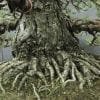More and more people are becoming interested in bonsai horticulture. This great hobby can help people relieve stress. Bonsai trees are planted and grown in small containers. They can even look more beautiful than those that grow in the wild with daily maintenance and care.
This kind of horticulture started centuries ago in Japan. It developed as a display of gentle respect for nature. It also allows people to illustrate their sense of beauty.
Bonsai trees require a greater commitment than growing regular types of plants. Bonsai growers should always bear in mind that the appearance and age of a bonsai tree forms the basis for its price and beauty.
A bonsai tree must be pruned, trimmed and shaped until the desired size and results are attained.
1. Tree Choices
There are a lot of tree species that have been favorites among bonsai enthusiasts. Individuals can also search for odd looking trees. Bonsai enthusiasts can start picking up different kinds of trees to get great ideas. The key is to be innovative and experiment to obtain excellent results. There are also common guidelines that can be followed in selecting bonsai subjects. Trees with small leaves, proportionate fruits and small flowers are commonly used.
2. Tapering And Branching
There are a lot of bonsai subjects to choose from. Some enthusiasts buy finished bonsai products. The branches on these trees are already where they should be. However, those who choose to grow their own bonsai trees should look at subjects with many major branches as these are known to be great choices. On the other hand, tapering gives the whole bonsai tree a unique appeal. Tapering can be used well with both young and old trees.
3. Nebari
This is a Japanese word that refers to the surface roots and lower trunk. This is what most people look at when designing a high quality bonsai tree. No matter how well-proportioned or old a tree is, it is not considered to be a great bonsai tree without a good nebari.
4. Tree Size
Bonsai tree size should be selected according to what the grower can handle. Very small trees do not consume a lot of space. However, they require more attention and a lot of watering. This makes them more difficult to grow and groom. On the other hand, larger size bonsai trees are not as difficult to take care of. However, growers may get tired of continuously repotting bigger trees.
5. Invest Wisely
It does not matter if growers are shopping for starters or old trees. The important thing that they must consider is buying the best trees. Bonsai enthusiasts should note that the best bonsai trees are costly and harder to maintain. That is why these trees should be examined thoroughly before they are purchased.
6. Examine What Is Certain
Bonsai growers should expect these miniature trees to change constantly. They should watch for new branches to eliminate growth in the wrong direction. Crossed roots should be eliminated early before they can start to grow together. Weeds should be removed from root to tip without using weed killers.
7. Trimming
Trimming is very important when rearing a good bonsai tree. It is important to keep these trees trimmed down so that they remain perfect miniatures. Growers should also learn how to prune their trees. Observing how dense the hedge branches are can be a good start to learning proper trimming techniques.
8. Wires
Wires are essential in growing beautiful bonsai trees. Growers who frequently forget to remove these wires can consider tying them down. However, this is not the best solution for perfect placement. Nevertheless, ties can also help move a branch in the right direction. Enthusiasts who want to grow the best bonsai trees should learn the art of wiring. These wires should be removed before they can damage the plant. This will prevent any scars on the tree.
9. Roots
Bonsai growers should have a basic understanding of root systems. Junipers are known to have a very tight root grasp. Fukien Tea trees are known to decline if they are left in a root-bound condition. Experienced bonsai growers can often give new hobbyists valuable advice about bonsai root systems.
10. Refining A Collection
Bonsai growers should also critique their plants at least once a year. This will give them an idea of how successful they have been throughout the year. Outside opinions can also help refine a bonsai collection. This will help growers refine their skills. Critiques can also provide valuable lessons that help bonsai growers rear successful trees in the future.
Additional Tips
A bonsai plant must be fed on a regular basis. This means that owners must water and fertilize these miniature trees.
Instructions found on fertilizer packages must be followed strictly to gain the best results.
It is also best to listen to those who have experience growing bonsai trees. They can teach new growers about the best times of the year to prune and how often pruning should be done.
Plants have distinct traits and conditions, and research is a must. Bonsai growers can find books that provide useful ideas on how to rear these plants properly. Bonsai books can be found in bookstores and online for easy reference.


